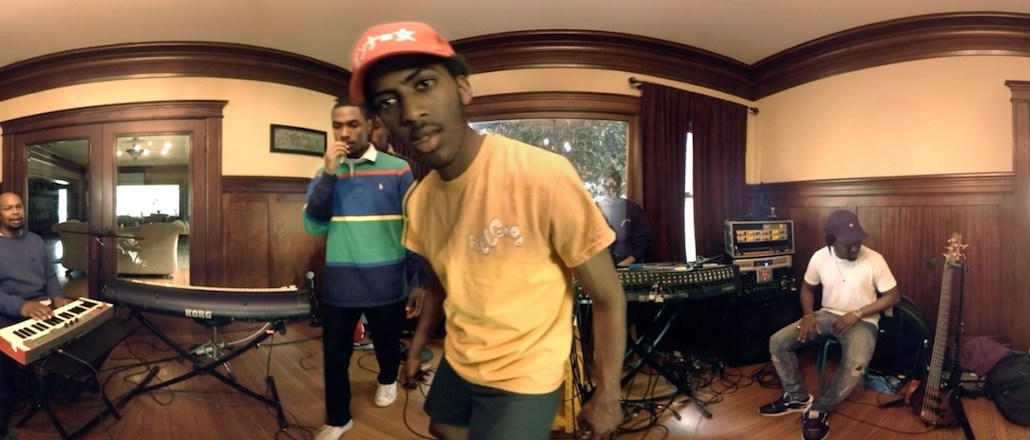Publishers forge ahead with VR, even if users and advertisers lag behind

When it comes to virtual reality, few publishers are as committed as The New York Times, with its dedicated VR app and Daily 360 feature, helped by funding from tech giants Samsung and Google. All told, the Times produces one six- to 10-minute VR film a month and one one- to two-minute 360 video per day, showcasing curiosities like the inside of a fireworks factory and far-flung places. It’s finding people are watching the longer videos to the end. “We’re beyond testing and learning,” said Varun Shetty, executive director of strategy and business development at the Times.
Another early mover, USA Today, is entering its second season of its weekly VR show, “VRtually There,” which has explored extreme sports and nature, after racking up 10 million views in season one last fall, on no fewer than seven platforms. “We are absolutely still moving full steam ahead,” said Kelly Andresen, the head of USA Today’s branded content studio, Get Creative.
But outside those two publishers and a handful of others, there’s less to crow about. VR is still test-and-learn territory for most publishers. It’s a great way for publishers to inspire their newsrooms, many of which have been demoralized by budget cuts; capture the attention of jaded audiences in their crowded news feeds; and show advertisers just how innovative publishers can still be.
“Building ‘VRtually There’ has really changed the perception of our brand,” Andresen said. “If it ends up they buy high-impact Gravity ads instead, that’s OK.”
But the headsets are expensive and not used widely, and brands are unsure how to advertise on the medium, which also makes VR extremely difficult to scale from production, technology and distribution standpoints, said Mike Dossett, associate director for digital strategy at RPA, who closely follows VR and its variants.
Publishers can get more audience scale by doing 360 video, VR’s lower-tech cousin that doesn’t take a special headset to view. But 360 is less captivating, both because of its less immersive nature and because the newsroom skills haven’t caught up. That risks diluting the experience and letting down viewers who are still new to the tech.
Dossett said he’s not seeing publishers scale back, but at the same time, he’s not seeing new ones jump into the fray. “We’re not getting a new flush of activity,” he said. “VR is still in the late stages of experimentation.”
Publishers doing VR are still relying on branded content, and for a lucky few, tech company funding. But there’s no guarantee the tech dollars will last. Shetty acknowledged the VR ecosystem would be more modest if not for the tech dollars feeding it. “They play a pretty big role,” he said. When the Times’ Samsung partnership ends after a year, the publisher will likely still do 360 video, but may do them less frequently, depending on the newsroom’s other priorities.
And advertising on VR is still just the domain of a few blue-chip advertisers; USA Today’s VR advertisers have included Macy’s, Nest and Honda.
Most advertisers are so new to the medium and don’t have VR-ready ads, and most publishers are new to making VR ad content themselves, so the path to monetization is far from clear. “For brands looking to wildly stand out, we’re not relying on publishers,” Dossett said. To ease advertisers along, USA Today has offered them the ability to do simpler sponsorships, Andresen said. “People don’t have the language or knowledge of how to buy it,” she said.
Other publishers strike a more conservative tone when it comes to VR. The Wall Street Journal sees VR/360 video as a “great storytelling tool,” said Joanna Stern, deputy head of video. “We, however, only use it when it is the best way to bring the story to life.” Similar, the Financial Times said it considers VR/360 something to do only when it truly enhances a story, and has no plans to do any in the immediate future.
Some publishers are focusing on 360 or augmented reality video instead. The Washington Post is prioritizing AR this year because it’s less expensive than VR, doesn’t require a headset and advertiser demand already exists. Slate took a half step into VR by initially creating its new weekly talk show in 2-D so it could be watched on any screen and designed it to be low-cost, so its continuation wouldn’t depend on ad support.
The Economist produced three VR films by the end of last year, but its future slate of VR production depends on whether it gets the ad sponsorship to pay for it, much like the rest of its films, said David Alter, director of programs at the publisher’s Economist Films unit. “Would we make VR films on our own dollar? We don’t have any plans to do that,” he said.
That doesn’t mean The Economist isn’t halfhearted about VR, though, as an investment in March in a VR startup, Parable, suggests. “It’s still early days for us,” Alter said. “We’ve scratched the surface of what it can do.”
More in Media

Here are the biggest misconceptions about AI content scraping
An increase in bots scraping content from publishers’ sites represents a huge threat to their businesses. But scraping for AI training and scraping for real-time outputs present different challenges and opportunities.

How Future is using its own AI engine to turn deeper engagement into ad dollars
Future is betting on AI to boost recirculation – and make that stickier audience more appealing to advertisers.

Substack’s video bet could be a growth hack for small creators
Video is helping smaller creators on Substack grow their subscriber numbers faster — but larger creators aren’t experiencing the same boost.








